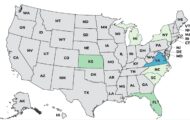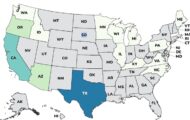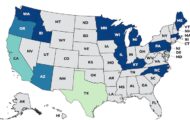The FDA has released a report detailing their investigation into three fall 2019 romaine E. coli O157:H7 outbreaks that sickened at least 188 people. That agency worked with the FDA and state officials to investigation how the romaine lettuce was contaminated.

The romaine E. coli O157:H7 outbreaks began in September 2019 and were declared over in January 2020. Some clusters within each of these outbreaks were traced to a common grower with multiple ranches and fields in the Salinas, California growing region. That grower was not named.
Investigators found one of the outbreak strains of E. coli O157:H7 in a sample taken from public land less than two miles upslope from a produce farm with multiple fields that was identified during traceback investigations. Other Shiga toxin-producing strains of E. coli (STEC) were found in closer proximity to where the romaine was grown, including two samples from the border area of a farm that was immediately next to cattle grazing land. The cattle were grazing in hills above the greens fields. Two samples were found in on-farm water drainage basins.
E. coli O157:H7 lives in the intestines of cows. It is released into the environment through feces, which can contaminate water, including groundwater, in the area.
The report states that while those strains were not directly tied to the outbreaks, they offer insight into how the pathogen survives and moves in the Salinas growing region. A potential contributing factor to these outbreaks is the proximity of cattle to the produce fields. This is especially true when the cattle are at a high elevation than produce fields.
So the FDA is calling on leafy greens grows to assess and mitigate risks associated with land use adjacent to and nearby their farm fields, including grazing lands and animal operations. One of the issues the FDA thought was important was the location of large Concentrated Animal Feeding Operations (CAFOs). But it turns out that high density animal operations aren’t the. only factor to think about.
These findings reinforce the FDA’s concern about the impact of nearby and adjacent land use on the safety of leafy green crops.
The FDA is calling on leafy greens growers to increase the efforts to prevent contamination from uphill adjacent cattle grazing lands. The growers should consider adding physical barriers such as berms, diversion ditches, and vegetative strips. The growers also need to consider risks from nearby and adjacent lands that could affect agricultural water.
And the growers need to increase digitization of traceability records. This helps the FDA and other officials trace the contaminated food back to its source, to help prevent more illness. Fainly, the growers must conduct a root cause analysis when a foodborne pathogen is found in their product and/or the growing environment.
The FDA has released its 2020 Leafy Greens STEC Action Plan in March 2020. There were 40 outbreaks of E. coli O157:H7 infections between 2009 and 2018 that had a confirmed or suspected link to fresh leafy greens. This plan is designed to help craft an action-oriented approach between the industry, state partners, government officials, and other stakeholders.




